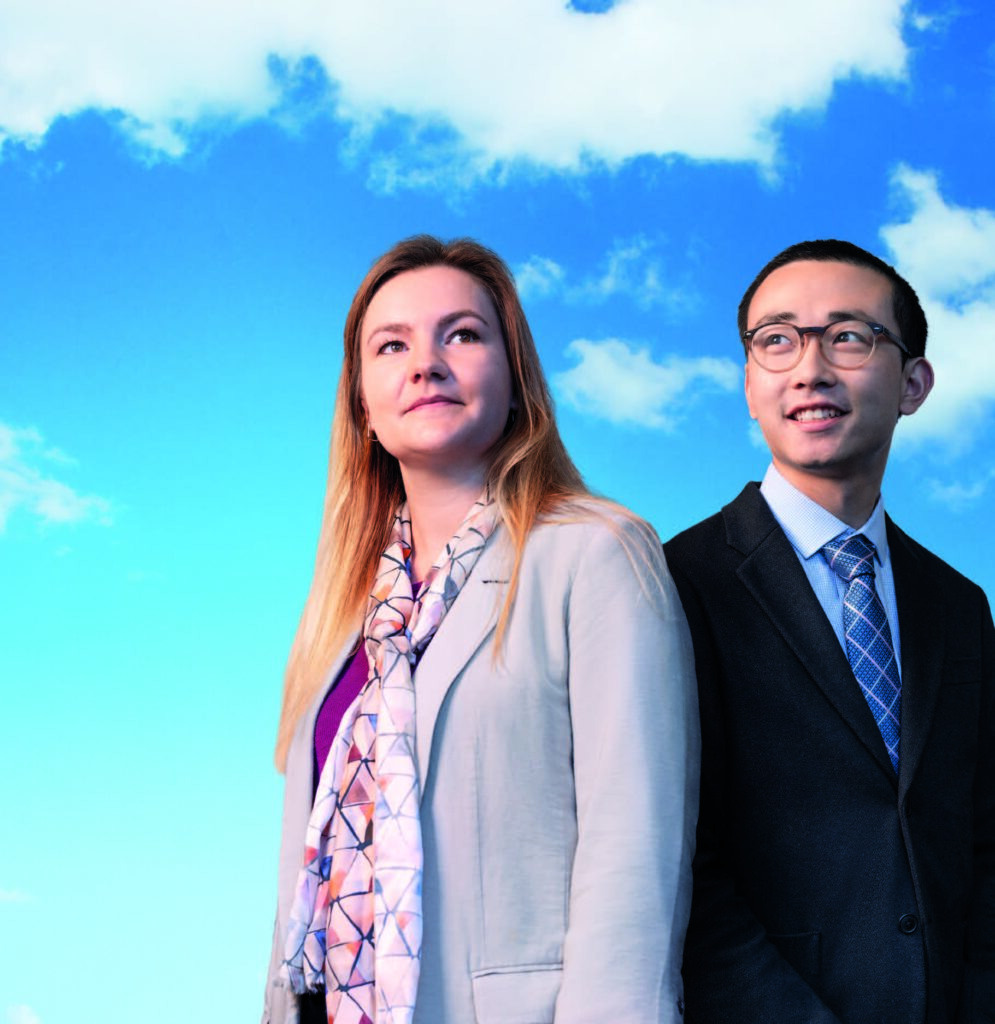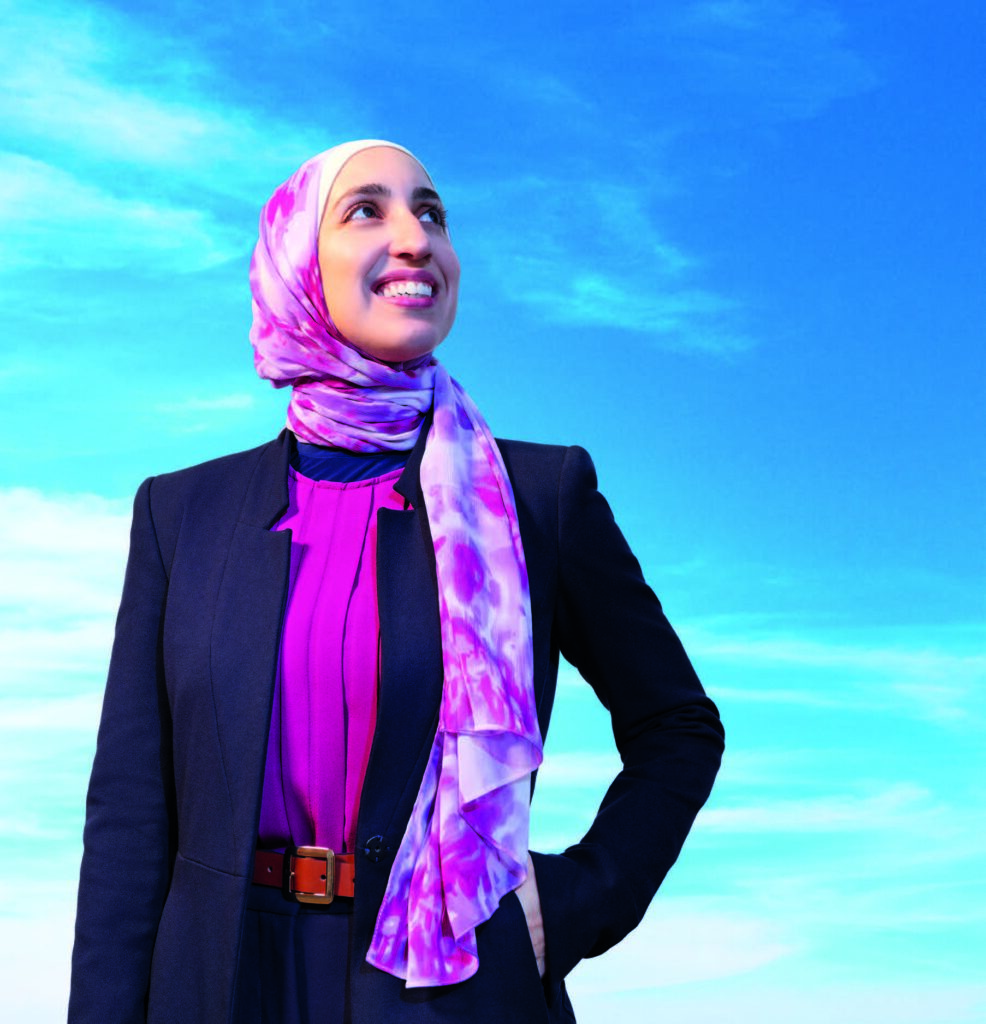Mirroring success: Mentors empower Ph.D. students to reach new heights
“It is a great thing to make scientific discoveries of rare value,” William J. Mayo, M.D., said in 1935. “But it is even greater to be willing to share these discoveries and to encourage other workers in the same field of scientific research.”
Every day at Mayo Clinic, Ph.D. mentors step up to this challenge, helping to inspire and empower the next generation of researchers.
They set powerful examples for their mentees, who may aspire to their mentors’ international renown, groundbreaking research or firm resolve to cure the world’s most complex diseases. Mentors offer practical assistance: making line edits to manuscripts, answering texts about scientific concepts, and writing letters of recommendation for awards and grants.
It’s time-consuming work. But when done right, mentorship benefits everyone, buoying mentees’ careers and giving mentors fresh perspectives and deep fulfillment. And eventually, mentees pass on what they learned to mentees of their own.
Below, Mayo Clinic Ph.D. mentees and their mentors testify to the power of mentorship.
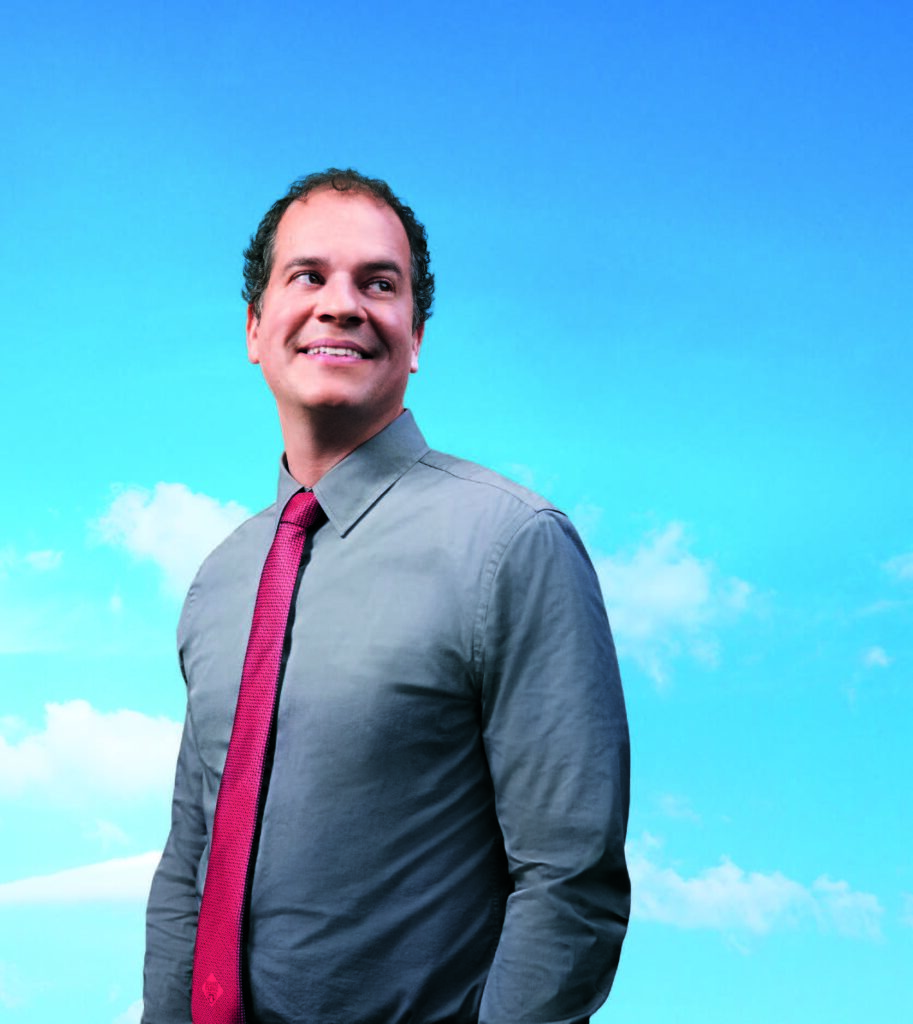
A NEW DIRECTION
Mentors like Amir Lerman, M.D., challenged what Brandon Tefft, Ph.D., thought he knew about caring for patients — and his own career path.
When Brandon Tefft, Ph.D. (CV ’18), enrolled as a cardiovascular disease research fellow at Mayo Clinic School of Graduate Medical Education, he came with an impressive résumé, a belief that he knew how to help patients and a career plan to work in the biomedical industry.
Instead, Dr. Tefft ended up in academia with a transformed understanding of how to prioritize patients. Today, he’s an associate professor of biomedical engineering in the Marquette University and Medical College of Wisconsin joint Department of Biomedical Engineering and the recent recipient of a groundbreaking National Science Foundation grant.
Dr. Tefft credits much of this career redirection and enrichment to his mentors, including Amir Lerman, M.D. (I ’89, CV ’94), a consultant in the Division of Ischemic Heart Disease and Critical Care at Mayo Clinic in Minnesota and a Barbara Woodward Lips Professor.
“Even as a postdoc, I was still planning to go into the biomedical industry,” Dr. Tefft says. “Dr. Lerman was quite instrumental in me ultimately deciding to pursue a career in academia instead.”
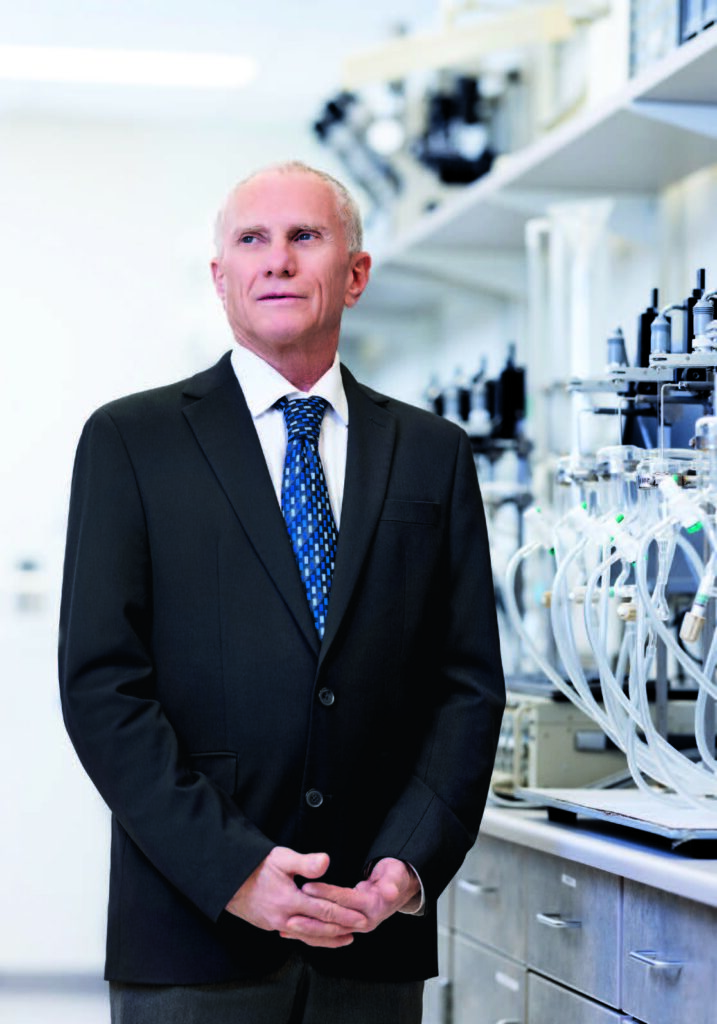
“You commit yourself to the individual’s career and success. Mentorship never stops.”
– Amir Lerman, M.D.
INTRO TO ACADEMIA
Dr. Lerman’s career intrigued Dr. Tefft, showing Dr. Tefft a side of academia he hadn’t considered.
“I saw you could eventually evolve to where you’re not only managing small research groups and teaching classes, but you can really become this internationally renowned expert,” he says. “It was appealing to me that you could have a global impact.”
But Dr. Lerman didn’t merely inspire; he helped make such a career possible for Dr. Tefft. An example: During Dr. Tefft’s time at Mayo, Dr. Lerman helped Dr. Tefft apply for and secure a competitive National Institutes of Health K99/R00 grant, known as the Pathway to Independence Award.
By funding mentored research for up to two years and then independent research for up to three years, the grant helps recipients launch their academic research careers. In Dr. Tefft’s case, he used the grant to explore nanotechnology as a way to develop next-generation magnetic biomaterials for prosthetic blood vessels and heart valves, ideally freeing patients from the need for antiplatelet and anticoagulation medication.
“Dr. Lerman was extremely supportive of me applying for that award. I had to put it together pretty quickly, because I learned about it right before I was about to lose eligibility,” he says. “He easily could have said, ‘No, it’s too late.’ But I am grateful that he said, ‘Yes, go for it.’”
That’s just one example of Dr. Lerman’s practical support, Dr. Tefft says. Along with Dr. Lerman, Dr. Tefft’s other mentors — including Gurpreet Sandhu, M.D., Ph.D. (MBIO ’92, BIOC ’94, CV ’03, CVIC ’04), Dan Dragomir‑Daescu, Ph.D. (PHYS ’04), and Robert Simari, M.D. (CV ’92, CVIC ’93) — put Dr. Tefft’s success and needs ahead of their own, Dr. Tefft says.
“Even as a junior faculty member, I’ve tried to pay that forward, to be less worried about my own career and my own career advancement, and more focused on what might be best for my students and my trainees,” Dr. Tefft says.
Dedication to your mentee is a long-term commitment, Dr. Lerman says. He’s been acting as a mentor for over two decades and takes the responsibility of mentorship seriously.
“You commit yourself to the individual’s career and success,” Dr. Lerman says. “Mentorship never stops. I still call my mentor. You can leave the lab, you can initiate your own lab, but you will always feel comfortable calling your mentor for advice and questions.”
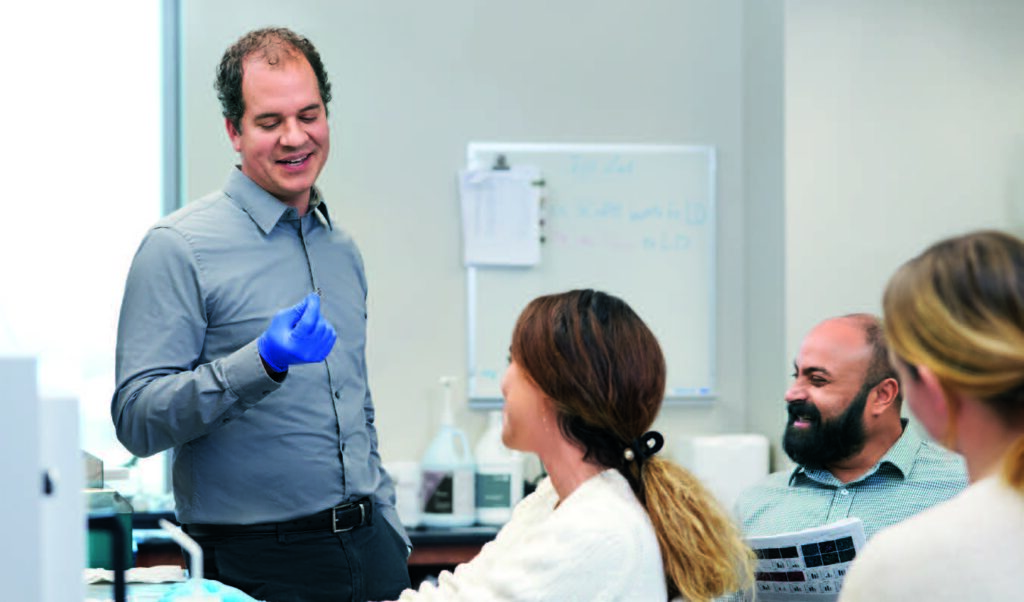
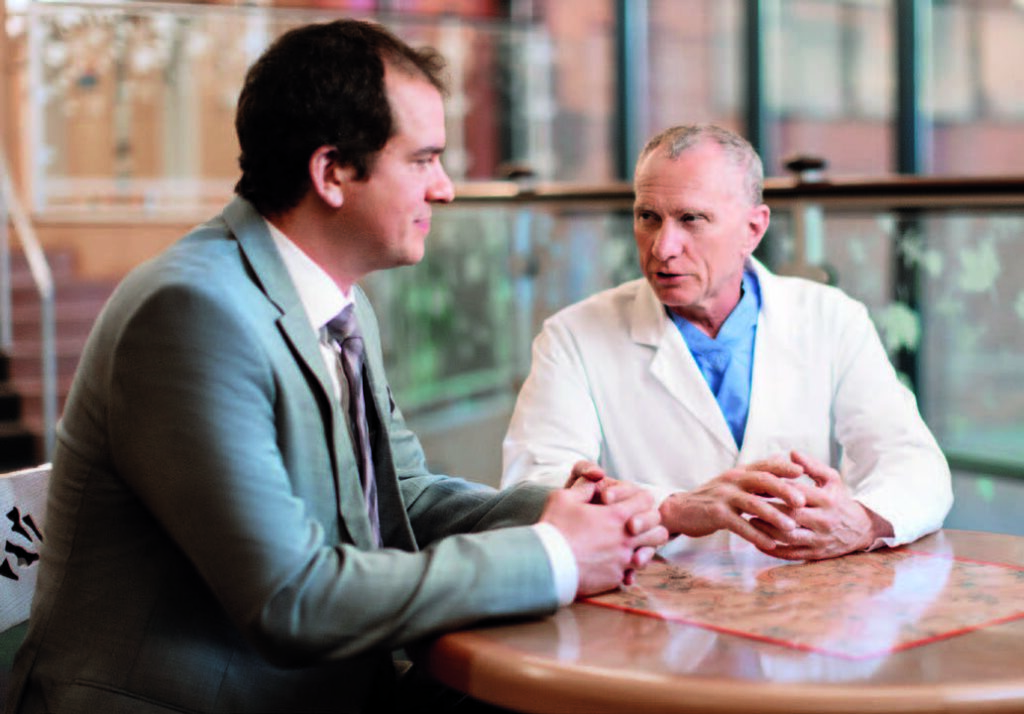
THINKING BIG FOR THE PATIENT
Working with mentors like Dr. Lerman, a clinician investigator who sees patients, clued Dr. Tefft in to patient needs in a way that his biomedical engineering doctoral degree did not, he says.
“I realized a lot of the things I was reading in the literature as a graduate student were kind of off the mark. When you go and talk to the clinicians, they say, ‘That’s what the engineering community thinks we need, but really we need this thing over here,’” Dr. Tefft says. “I had just graduated with a Ph.D. from Northwestern, and it was kind of humbling to say, ‘All right, I’m just getting started here. I have a lot I need to learn about doing translational research and what the needs of patients are.’”
Dr. Tefft’s mentors not only helped him better understand patient needs but emboldened him to aim high to meet those needs.
“I really appreciated that my mentors were big thinkers,” Dr. Tefft says. “I think they could have all had really nice careers seeing their patients and publishing moderate-impact papers. But that wasn’t what they wanted to do. That wasn’t their mentality. They really wanted to make a difference and improve healthcare for patients. And to do that, you have to take risks, and you have to think big.
“That really rubbed off on me, and I think that’s been a big part of my success with bringing in grants and defining my own research directions. I haven’t been afraid to think outside the box and to make big plans.”
Dr. Tefft is certainly thinking big. In 2024, he received a Faculty Early Career Development (CAREER) award from the National Science Foundation to create a living heart valve prosthesis for children born with congenital heart disease. A biodegradable scaffold would act as the initial support structure and would be seeded with cells from the patient. The hope is that with time, the cells would create their own extracellular matrix and degrade the artificial scaffold, creating a living, functional heart value that would ideally be indistinguishable from a native valve.
“A child needs a valve that can not only last indefinitely, but that can also grow with them. And of course, existing heart valve prostheses don’t grow and they don’t last indefinitely,” Dr. Tefft says. “We’re going to try to mimic that embryonic developmental pathway in our engineered valves to hopefully end up with bioengineered tissue that more accurately replicates native tissue.”
For this project, Dr. Tefft is still drawing on the lessons learned from his mentors at Mayo Clinic, such as the value of collaborating with clinicians and basic scientists, he says. And as always, Dr. Tefft is striving to consider the needs of the patient first.
“Dr. Lerman is a clinician investigator. He has an M.D., so everything we did was about helping patients,” says Dr. Tefft. “I definitely brought that perspective to this National Science Foundation award.”
COLLABORATION TO TACKLE COMPLEX DISEASE
Harry Min, Ph.D., and Stephanie Oatman, Ph.D., made important neurodegenerative disease discoveries by building on the expertise of mentor Nilüfer Ertekin-Taner, M.D., Ph.D.
The work and research of Nilüfer Ertekin‑Taner, M.D., Ph.D. (NSCI ’03, I1 ’04, N ’07, NBN ’08), is dedicated to finding cures and diagnostics for Alzheimer’s disease and related disorders.
That’s a monumental task. These disorders are incurable, epidemic and undiagnosable until late in the disease course, she says, with many possible disease pathways.
“Every patient gets Alzheimer’s disease for their own set of reasons. We think of it as a single disease, but it’s infinitely complex,” says Dr. Ertekin-Taner.
So it’s a good thing that at the start of her career, Dr. Ertekin-Taner was able to lean on the resources and expertise of her mentors — and that her own mentees have similarly benefited from her knowledge, skills and consistent mentorship.
Dr. Ertekin-Taner and her mentees Stephanie Oatman, Ph.D. (BMB ’24), and Yuhao (Harry) Min, Ph.D. (CTSA ’24), have made important discoveries related to neurodegenerative disease — discoveries that were all made in an open, cooperative environment with strong mentor support.
“The collaborative spirit is what sets Mayo apart. That gives us this very unique opportunity to work on very big, important problems in biology, but in a way that’s really pertinent and translatable to humans,” Dr. Ertekin-Taner says.
BUILDING ON A SOLID FOUNDATION
Dr. Ertekin-Taner is a physician-scientist, enterprise chair of the Department of Neuroscience and the Roy E. & Merle Meyer Professor of Neuroscience at Mayo Clinic. She sees dementia patients in her practice and is principal investigator of the Genetics of Alzheimer’s Disease and Endophenotypes lab at Mayo Clinic in Florida. The lab is made up of over 20 individuals and has been fully funded by the National Institutes of Health since its inception.
But she got her start at Mayo Clinic working in the lab of Steven Younkin, M.D., Ph.D. (PHAR ’95), emeritus professor of pharmacology at Mayo Clinic College of Medicine and Science in Florida, focusing her thesis on genetic factors that lead to Alzheimer’s disease. She was mentored by Dr. Younkin and Neill Graff‑Radford, M.D. (N ’89), a consultant in the Department of Neurology at Mayo Clinic in Florida and the David Eisenberg Professor, and had access to brain and blood specimens from deeply characterized patients who had been recruited by Dr. Graff-Radford and other Mayo Clinic physicians.
“It was my luck that I was in this phenomenal environment with access to these biospecimens and the know-how from clinicians and scientists,” she says.
Building on Dr. Younkin’s and Dr. Graff-Radford’s analysis and foundation of knowledge of these specimens, she conducted a pioneering study for her thesis, introducing the use of plasma amyloid-beta levels as a phenotype in genetic studies of Alzheimer’s disease.
“I owe Dr. Graff-Radford and Dr. Younkin a debt as a mentee, and it’s impossible to fully pay that debt. But one way may be to try and be the best mentor that I can be,” Dr. Ertekin-Taner says. “Mentoring is hard work. It’s time consuming and it’s a lot of responsibility, but it’s also an aspect of my job that brings me a lot of joy.”
Dr. Oatman and Dr. Min have both benefited from this dedication and have already made important research findings that are “directly related to patients,” Dr. Ertekin-Taner says.
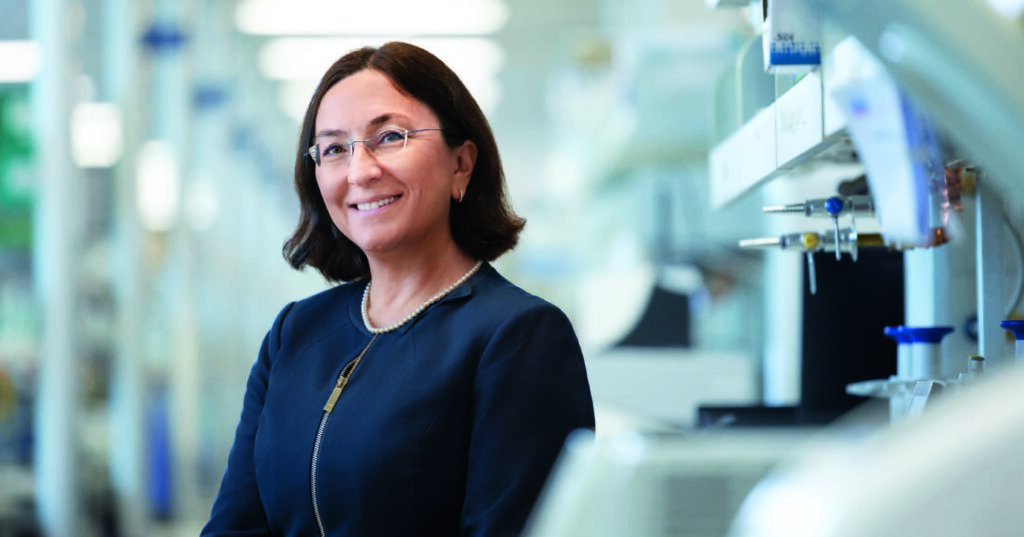
“Mentoring is hard work. It’s time consuming and it’s a lot of responsibility, but it’s also an aspect of my job that brings me a lot of joy.”
– Nilüfer Ertekin-Taner, M.D., Ph.D.
BENCH TO BEDSIDE
Dr. Min was drawn to study in Dr. Ertekin-Taner’s lab because of her fascinating and impactful research and her status as “the leading expert on Alzheimer’s disease and omics research,” he says.
He found Dr. Ertekin-Taner to be a consistent and dedicated mentor, willing to take the time to help him establish himself as a researcher.
“When you first onboard as a Ph.D. student, you don’t know what you’re doing. I had to constantly go to her and say, ‘OK, I have these results. What do I do next? What’s the big picture? What’s the question we want to address? How does it impact human health?’” he says. “You don’t get that by reading papers. You have to be in the field for a long time to have those kinds of ideas.”
Dr. Ertekin-Taner’s commitment to helping Dr. Min find his way paid off. Dr. Min found molecular changes in the brains of patients with progressive supranuclear palsy (PSP), an incurable brain disorder with symptoms that mimic Parkinson’s disease and dementia. The condition leads to rapid, progressive decline and death.
These were significant findings, as these molecular changes could act as potential treatment targets for PSP. But Dr. Min didn’t stop there. Thanks to Dr. Ertekin-Taner’s mentorship, he’s working to take his findings from bench to bedside.
“We’re developing actual therapy. It is amazing that working with Dr. Ertekin-Taner, we can continue the therapeutic development and hopefully bring it to clinical trials,” he says. “Her role as a physician-scientist and years of experience in this field helped me go from the basic science discovery to translation into a potential product.”
Dr. Min’s work also has the potential to make a broader impact across other neurological conditions.
“Because PSP shares similar biology with other neurological disorders such as Alzheimer’s disease, we hope our findings might also benefit drug discovery efforts in other neurological disorders,” he says.
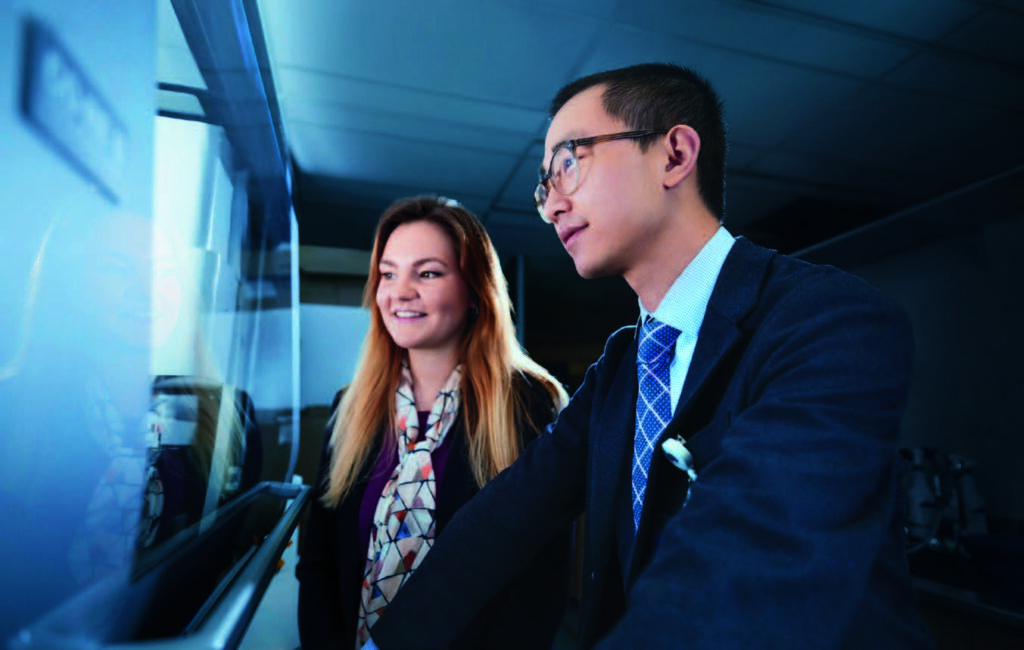
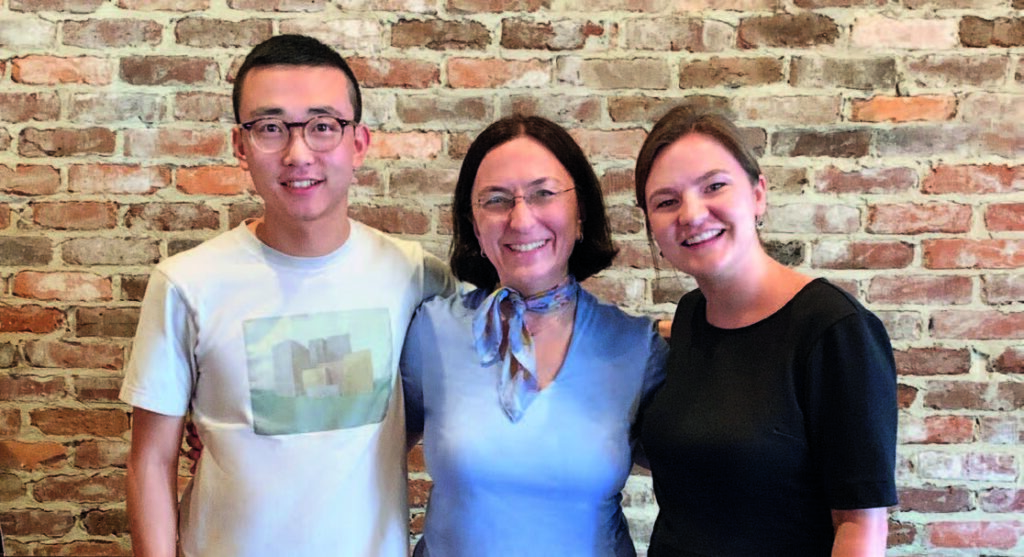
THE CYCLE CONTINUES
Dr. Oatman’s work also has important implications for treating patients. Her research is focused on connecting the pathological changes in brains with Alzheimer’s to molecular changes via epigenetics and transcriptomics.
“Stephanie’s work has helped unravel the complexity of the biochemical changes in a patient’s brain,” Dr. Ertekin-Taner says. “That’s essential for developing future therapies for patients with Alzheimer’s disease.”
For this work, Dr. Ertekin-Taner taught Dr. Oatman to handle the sometimes unwieldy big data involved in omics.
“There are a lot of ways to get really lost in all that data. Nilüfer has a really good way of taking a step back and seeing the important things,” says Dr. Oatman. “It’s making sure that you understand what you’re doing and why you’re doing it, rather than throwing the entire kitchen sink of data analysis at it.”
Dr. Oatman already had a chance to pass that knowledge along when she mentored then-high school student Kristi Biswas in benchwork and genome analysis as part of Mayo’s 10-week SPARK Research Mentorship Program. Dr. Oatman taught Biswas to focus her big data research and says it was rewarding to mentor Biswas so that she “really understood what was happening and why she was doing it.”
Biswas found that a genetic variant associated with brain levels of Alzheimer’s disease-related proteins also was associated with disease-related features, like the amount and location of tau and amyloid deposits. She ultimately placed in the Biomedicine and Life Sciences category at an international student science and engineering fair and says her time in the SPARK program was a “life-changing experience.”
“I wasn’t really a basic science person, but once I got into research, I realized how fun it is and really limitless,” Biswas says. “There’s no end to what you can learn.”
THE SKY’S THE LIMIT
The whole-hearted support of mentors Lisa Schimmenti, M.D., and Stephen Ekker, Ph.D., emboldened Alaa Koleilat, Ph.D., to push the bounds of medical knowledge.
Ask Alaa Koleilat, Ph.D. (CTSA ’20, LGG ’23), about her mentors during her Ph.D. program in the Clinical and Translational Science Track at Mayo Clinic Graduate School of Biomedical Sciences, and she’ll detail the many ways in which Lisa Schimmenti, M.D. (CGEN ’15), and Stephen Ekker, Ph.D. (BIOC ’07), provided practical support to propel her career. That included imparting research skills, providing thesis feedback and facilitating professional connections.
But beyond this pragmatic assistance, what Dr. Koleilat keeps returning to is how her mentors made her feel.
“They believed in me. They made me feel that if there was any goal I wanted to achieve, I could do it,” Dr. Koleilat says. “They made me feel like the sky was the limit.”
They did that by enveloping Dr. Koleilat in holistic support and affirming her at every turn: Yes, I have time to talk to you. Yes, you can pursue opportunities that don’t directly relate to your thesis. Yes, you can succeed as a parent and a scientist. Yes, you can challenge the accepted wisdom.
Dr. Schimmenti, Department of Clinical Genomics at Mayo Clinic in Minnesota, views mentorship as an “incredible honor” and a chance to set students up for success. That involves helping them achieve concrete goals like publishing papers and submitting successful grant applications. But she says it’s also about solidifying their professional identity.
“It’s helping them to really see themselves as a scientist,” she says. “It’s helping them to think about what they can do with their life, how they can use science to make the world a better place.”
Dr. Ekker is now a professor of pediatrics and associate dean of innovation and entrepreneurship at Dell Medical School, part of the University of Texas Medical Center. He also played a pivotal role in helping Dr. Koleilat believe in her scientific abilities — and encouraged her not to set limits on them.
“Steve thinks anything is possible. He was always the guy saying, ‘Why not? Why can’t we do this? What’s stopping us?’” Dr. Koleilat says. “It made me think in every aspect of my work: Why can’t we do this?”
With such strong support from her mentors, Dr. Koleilat quickly adopted this can-do mindset, writing a thesis that explored an entirely new type of treatment for genetic hearing loss. Today, she’s an assistant professor of molecular and medical genetics at the Oregon Health and Science University (OHSU) School of Medicine. Her work is still pushing the bounds of medical knowledge; today, she’s aiming to improve genetic testing technologies for inherited disorders and cancer.
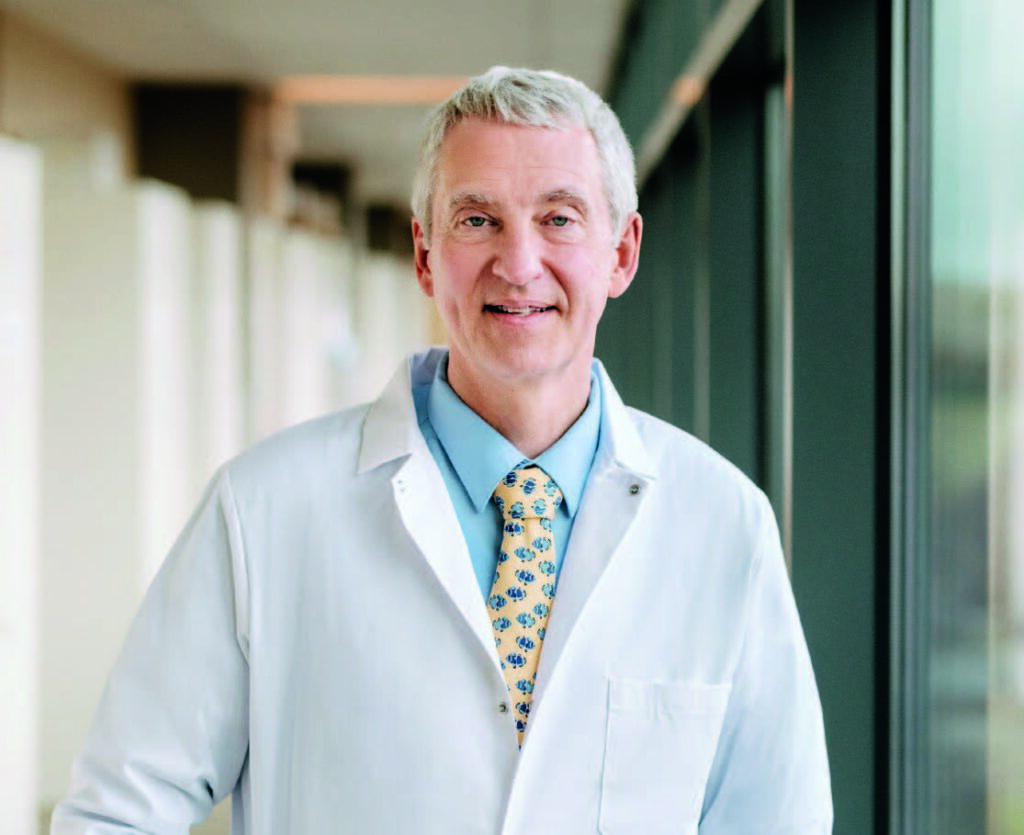
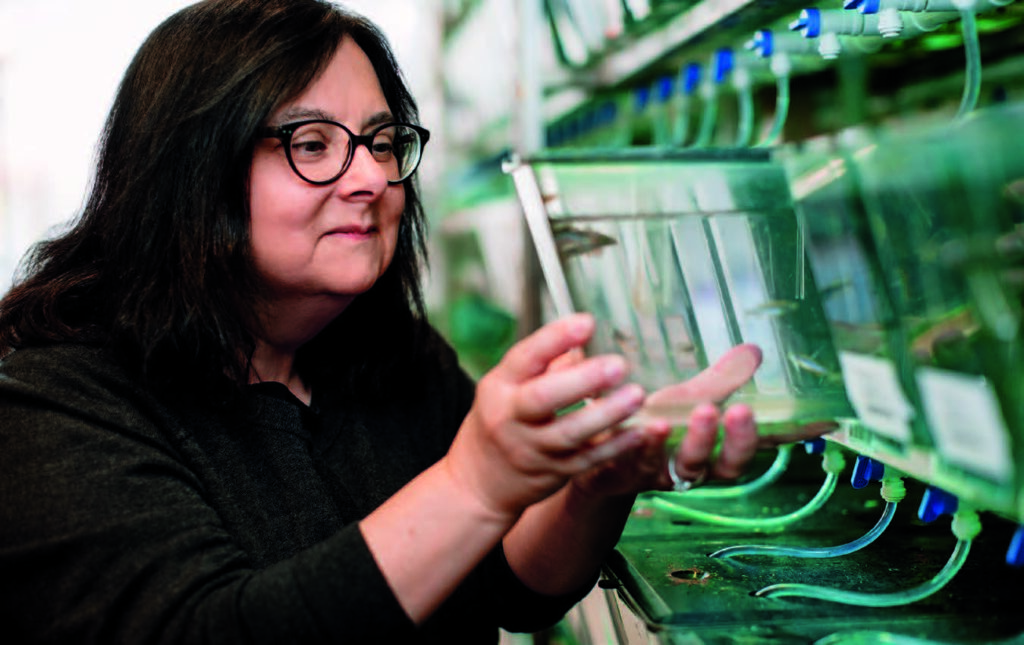
WHY NOT?
During her time at Mayo Clinic, Dr. Koleilat worked in Dr. Ekker and Dr. Schimmenti’s zebrafish labs, focused on finding pharmaceutical treatments using the zebrafish model for Usher syndrome type 1. The genetic disorder is marked by profound hearing loss or deafness at birth, severe balance problems that delay sitting and walking, and progressive vision loss. The only available treatment for this type of hearing loss is cochlear implants.
Both mentors helped her keep patients at the center of her project. Dr. Schimmenti frequently sees patients with Usher syndrome, insight which gave Dr. Koleilat’s project “a foot in the clinic,” Dr. Koleilat says. And though Dr. Ekker is not a clinician, he had a similar emphasis on patient benefit.
“He had a mentality that if we discover something in the lab and it doesn’t make it to patients — so what?” Dr. Koleilat says. “He had that constant drive of, ‘Let’s get this into the clinic.’”
Dr. Ekker also helped Dr. Koleilat witness the experience of patients with hearing loss firsthand by suggesting she do a clinical rotation in otolaryngology. Dr. Koleilat asked, “Can we do that?”
Dr. Ekker’s answer was typical: Why not?
Although an unusual move for a first year Ph.D. student, Dr. Ekker realized that a clinical rotation could allow Dr. Koleilat to network, provide a clinical perspective to her research and identify gaps in care that she could try to address.
Dr. Ekker’s instinct was correct. Through that otolaryngology rotation, Dr. Koleilat ended up meeting then-Mayo Clinic audiologist Gayla Poling, Ph.D. (AUDI ’15). The pair designed, validated and tested a unique tablet-based hearing assessment tool (known as GoAudio) designed to broaden access to hearing testing. Dr. Poling, who now works at the National Institute on Deafness and Other Communication Disorders, ended up being a close mentor, says Dr. Koleilat.
“Lisa and Steve see everything as an opportunity,” Dr. Koleilat says. “Other mentors are very focused on, ‘What are the immediate outcomes, the tangibles, the paper?’ They saw training as holistic.”
TAKING TIME
At the time, Dr. Ekker was the dean of Mayo Clinic Graduate School of Biomedical Sciences, Dr. Schimmenti was chair of the Department of Clinical Genomics, and both had busy labs. But they always made time for Dr. Koleilat, an example she now follows with her own mentees.
“Anytime someone walks into my office, I step away from my computer and I give them my full attention. That’s how you feel like this person cares about what you have to say,” Dr. Koleilat says. “Lisa and Steve are far busier than I am. So I tell myself, ‘If they can do it, I can definitely do it.’”
Dr. Schimmenti would patiently explain or draw out concepts she didn’t understand, Dr. Koleilat says — and crucially, didn’t make her feel deficient for not knowing the answers.
“She made me feel like we were learning it together sometimes, and that made me comfortable to ask questions and throw out ideas,” says Dr. Koleilat. “I think that actually helps the research process, because you’re more innovative when you can throw out ideas and not feel any judgment about it.”
That’s an important dynamic for Dr. Schimmenti, who believes that listening to your mentee can improve your science.
“A lot of times mentees don’t make any assumptions. As a career scientist, sometimes you make some assumptions and may not even realize it, just thinking, ‘Oh, everybody in the literature says that.’ And then you realize ‘Oh, maybe the literature’s not right,’” she says. “It’s better for science and it’s better for me because it allows me to take a step back and really try to see the world through their eyes — and then we find something new.”
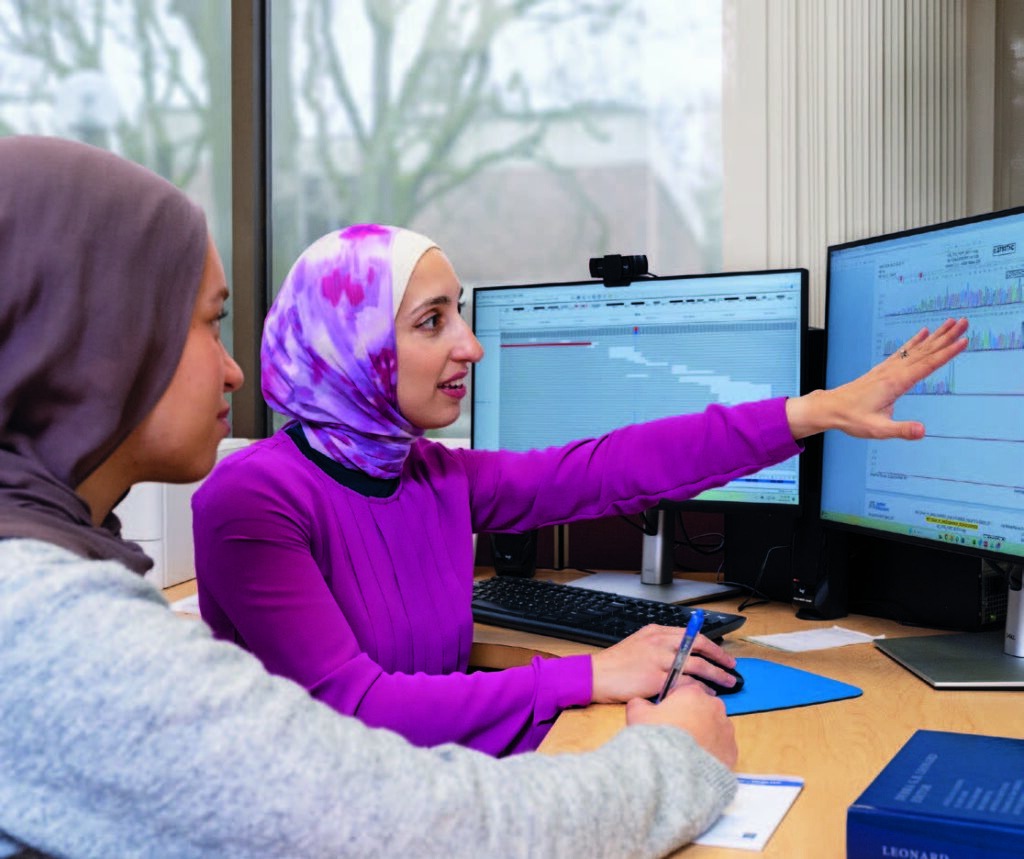
“They believed in me. They made me feel that if there was any goal I wanted to achieve, I could do it. They made me feel like the sky was the limit.”
– Alaa Koleilat, Ph.D.
PAYING IT FORWARD
When Dr. Koleilat had her first child during her Ph.D., she experienced a new level of wholehearted support from Drs. Ekker and Schimmenti. Before she left for maternity leave, Dr. Koleilat met with her mentors to make sure everything was set up to continue while she was away.
“Steve said, ‘The baby blues are real. Take care of yourself.’ Lisa told me, ‘After you have your kid, we understand, your family will come first.’ They said, ‘Come back when you’re ready. Whatever that looks like, even if it’s a few days a week.’ They made me feel like I could do it with no judgment and with support,” Dr. Koleilat says. “I thought to myself, ‘Wow, I really have hit (mentorship) gold.’”
It’s a joy to support mentees through their professional and per-sonal journeys, Dr. Schimmenti says.
“You get to watch people succeed,” she says. “I’m still hearing from students that were in my lab 20 years ago and hearing how they’re doing. And they’ve got labs and are doing cool research and they have families and kids and dogs. It’s kind of like having more kids myself — I get to watch them grow up.
“And then the fun thing is that they pay it forward. They help the next generation.”
Dr. Koleilat is passionate about mentorship in her current role at OHSU, but she started paying it forward during her time at Mayo. She started a mentorship program within the Department of Laboratory Medicine and Pathology for lab technicians, with a focus on underrepresented minorities. The project, Dr. Koleilat says, was “all inspired because I benefited so much from mentorship.”
“I thought, ‘I wish everybody could have this.’ How many people need that extra push to achieve their goal but haven’t been able to get a mentor to help them?” she says. “You can work hard all you want, but then to have someone put you up for opportunities or advocate for you — those things are important as you move up in your career.”
This story appears in the latest issue of Mayo Clinic Alumni magazine. You can read or download a PDF of the issue here.
Mayo Clinic alumni are entitled to the print version of the quarterly magazine. If you’re not receiving the magazine, register or log in to your online MCAA profile to make sure your address is correctly entered. Or contact the Alumni Association at mayoalumni@mayo.edu or 507-284-2317 for help.
Not sure if you’re an alum? If you’ve worked or studied at Mayo Clinic, you might be surprised. Learn more here.
Oyster Photography by Jason Little.
